Understanding Slide Layouts with PowerPoint
Microsoft PowerPoint provides a range of slide layouts to help you structure and organize your presentation content. Each layout serves a specific purpose and allows you to present information in a clear and visually appealing manner. Let's explore the key aspects of understanding slide layouts:
1. Choosing a Slide Layout:
When you create a new slide, PowerPoint prompts you to choose a slide layout. This choice determines the arrangement of content elements on the slide, such as title text, bullet points, images, and more. The layout you select should align with the type of content you want to present.
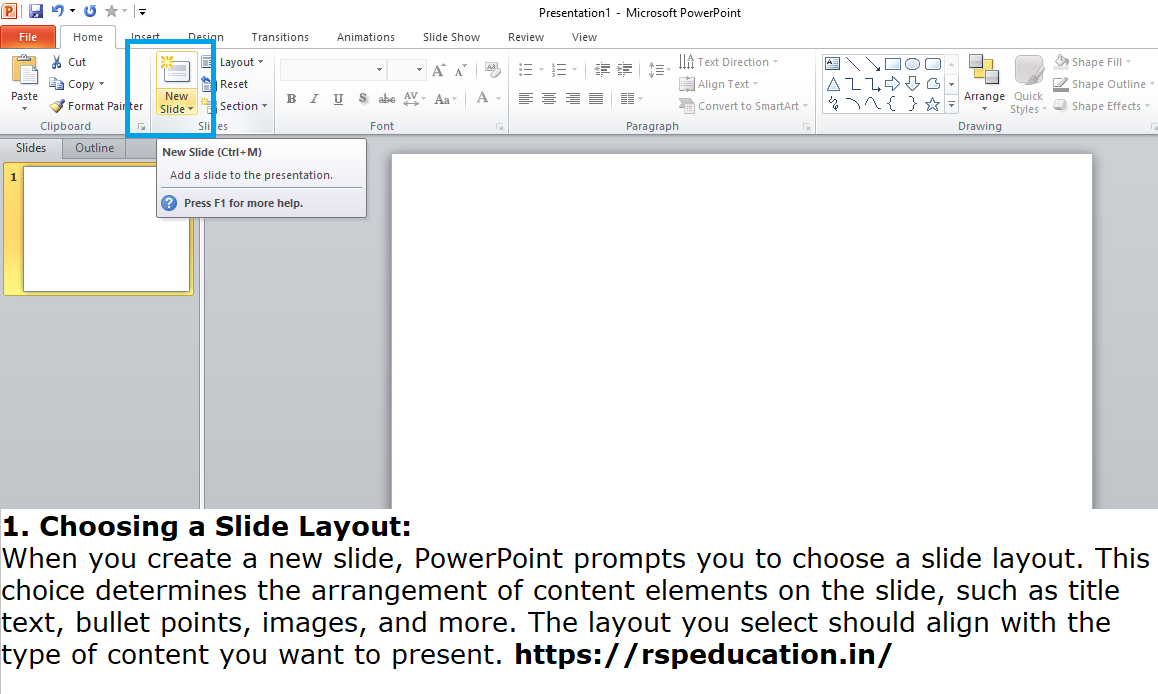
2. Title Slide Layout:
The title slide layout is typically the first slide in a presentation. It includes spaces for the presentation title, subtitle, and sometimes additional information such as the presenter's name and date. Use this layout to introduce your presentation and set the tone.
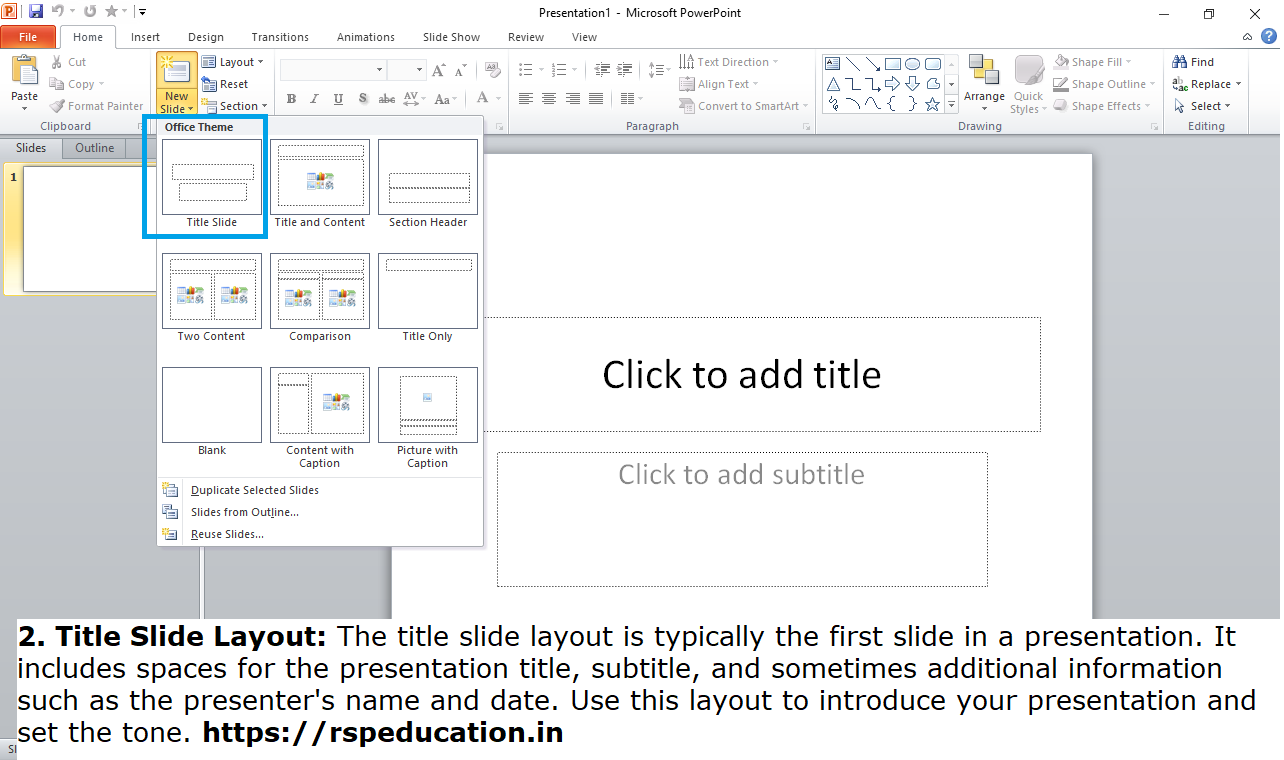
3. Content Slide Layout:
Content slides are the most common type of slides in a presentation. They feature placeholders for titles and content, which can include bullet points, images, charts, and more. Content slides are versatile and can be customized to suit various types of information.
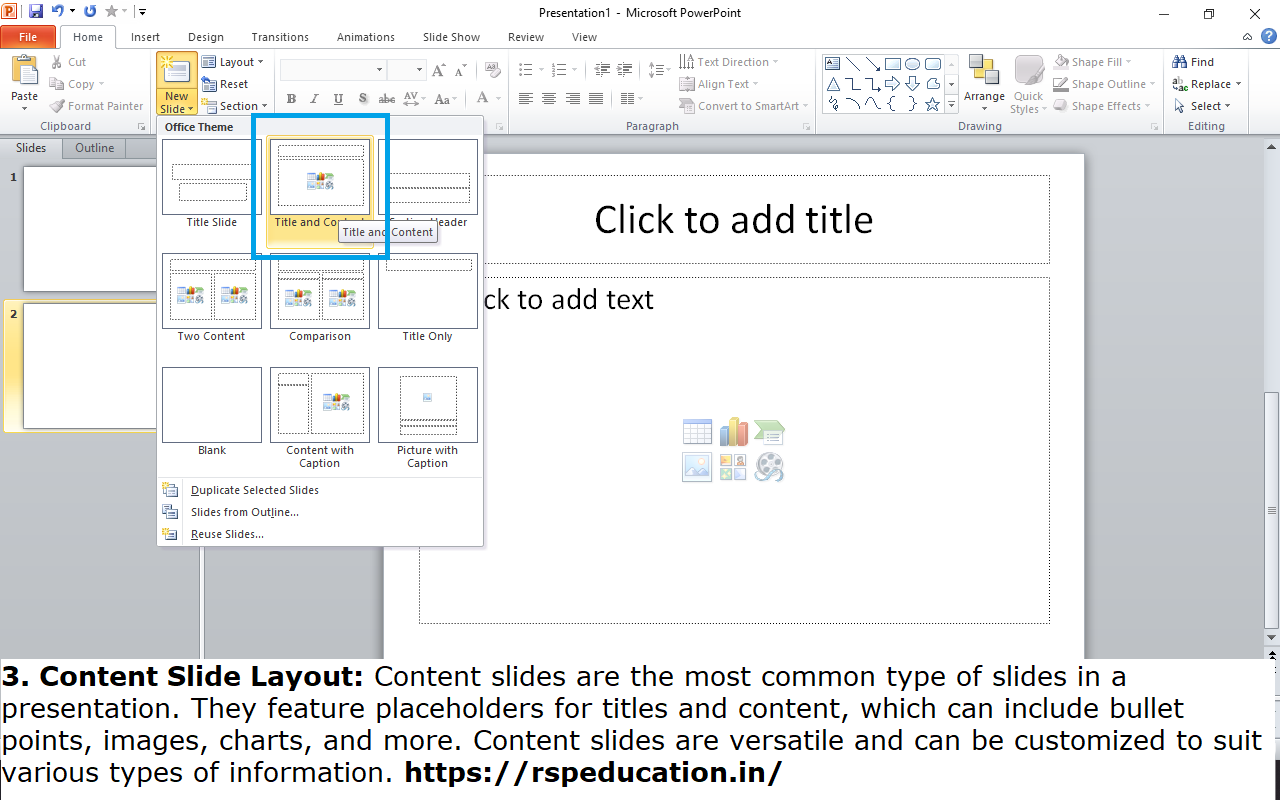
4. Section Header Layout:
Section headers are useful for dividing your presentation into distinct sections. This layout often includes a larger title area and may have a different background color to visually separate sections. It helps in organizing your content into logical segments.
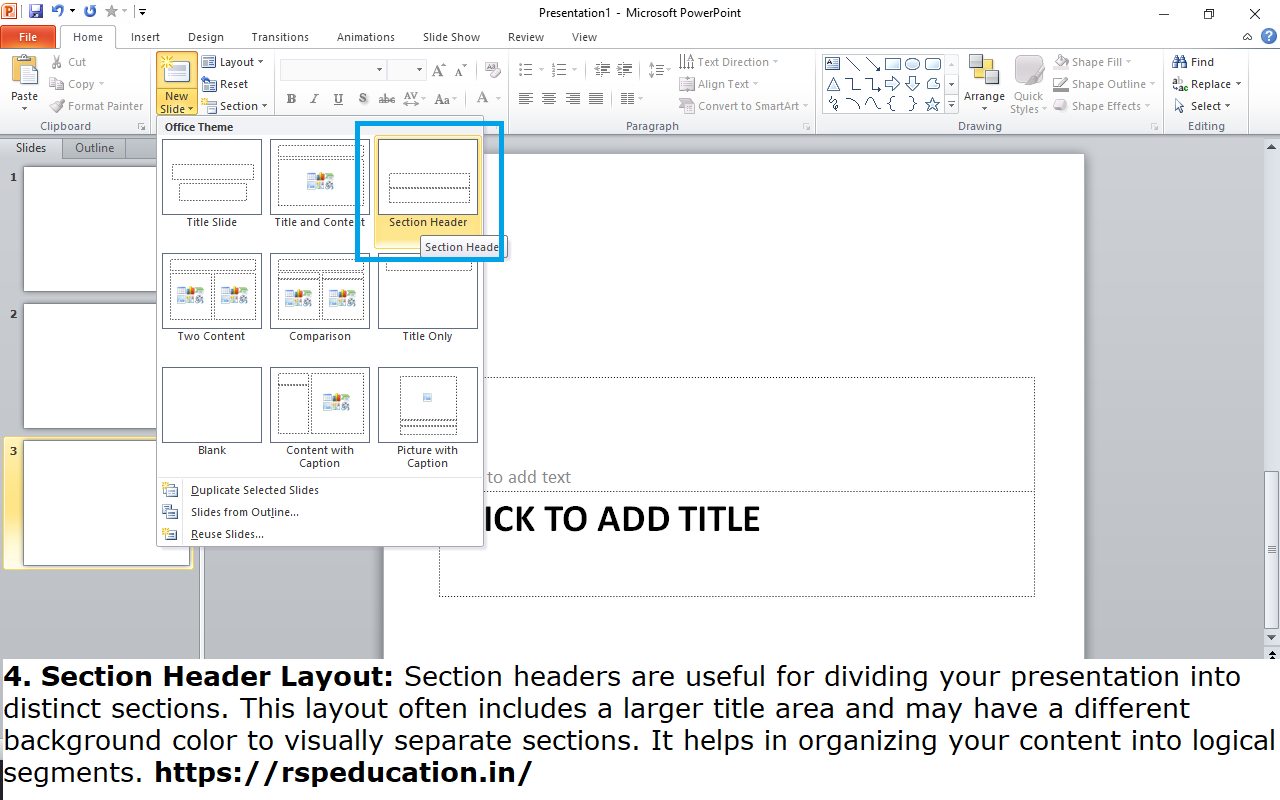
5. Title and Content Layout:
This layout combines a title area with a content area. It is suitable for slides where you want to include a significant title along with detailed information. The title and content layout provides a balanced arrangement for presenting key points.
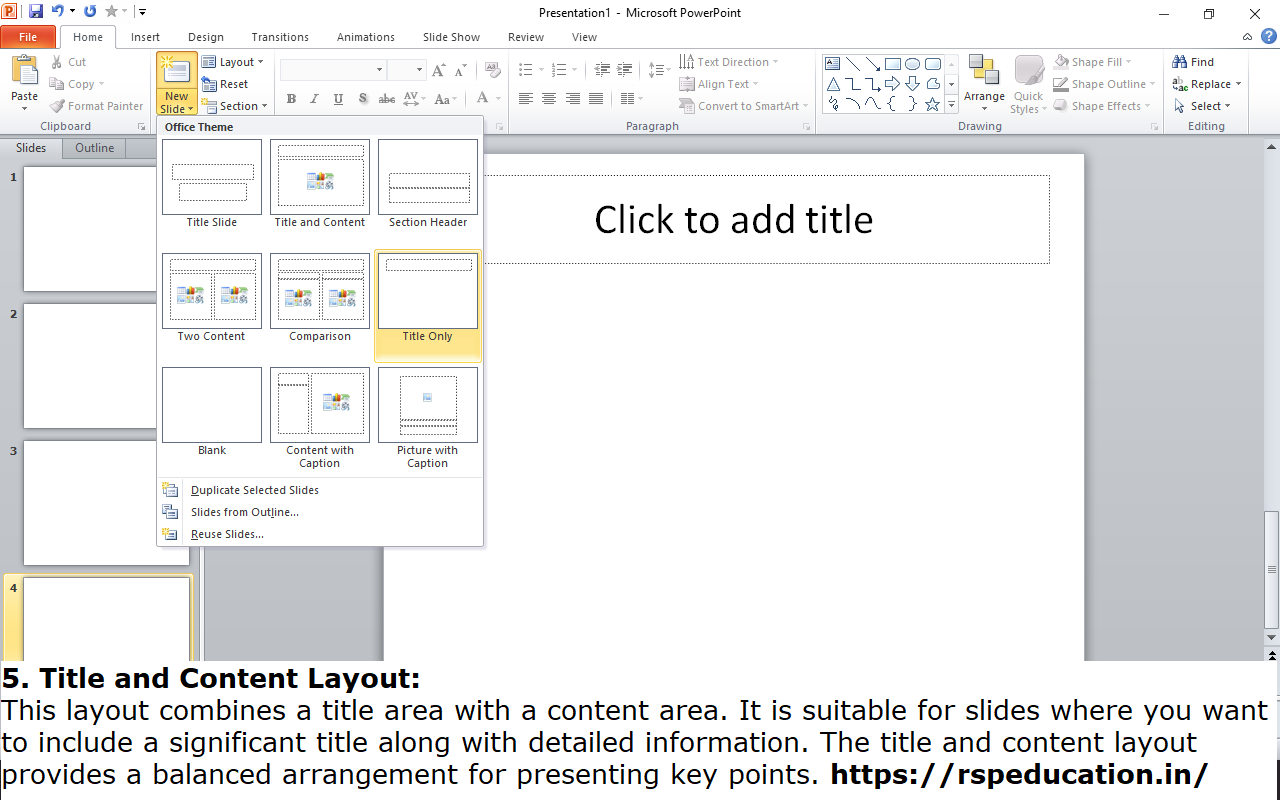
6. Comparison Layout:
The comparison layout is designed for showcasing comparisons between two sets of data, ideas, or concepts. It often features two content areas side by side, making it easy for the audience to identify similarities and differences.
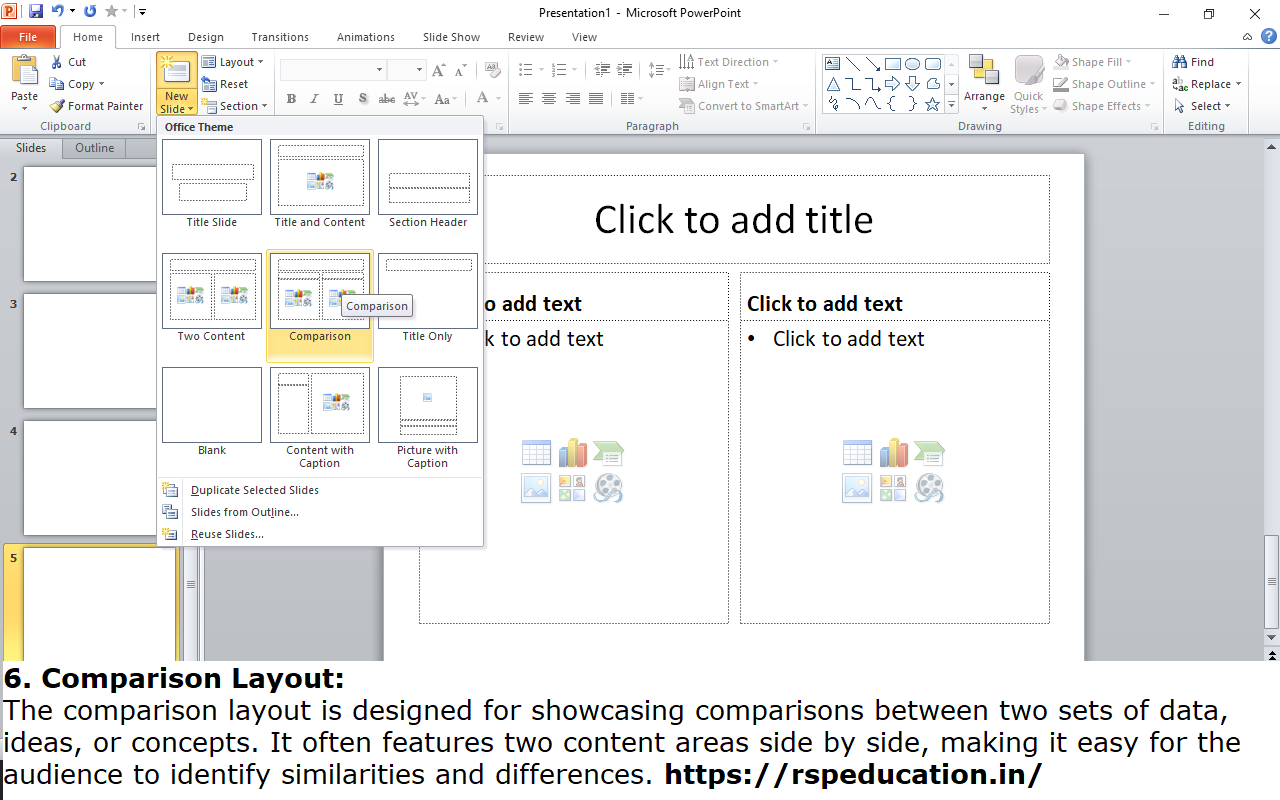
7. Two Content Layout:
As the name suggests, this layout allows you to include two content areas on a single slide. It is beneficial when you have two sets of related information to present simultaneously. Customize each content area with text, images, or other multimedia elements.
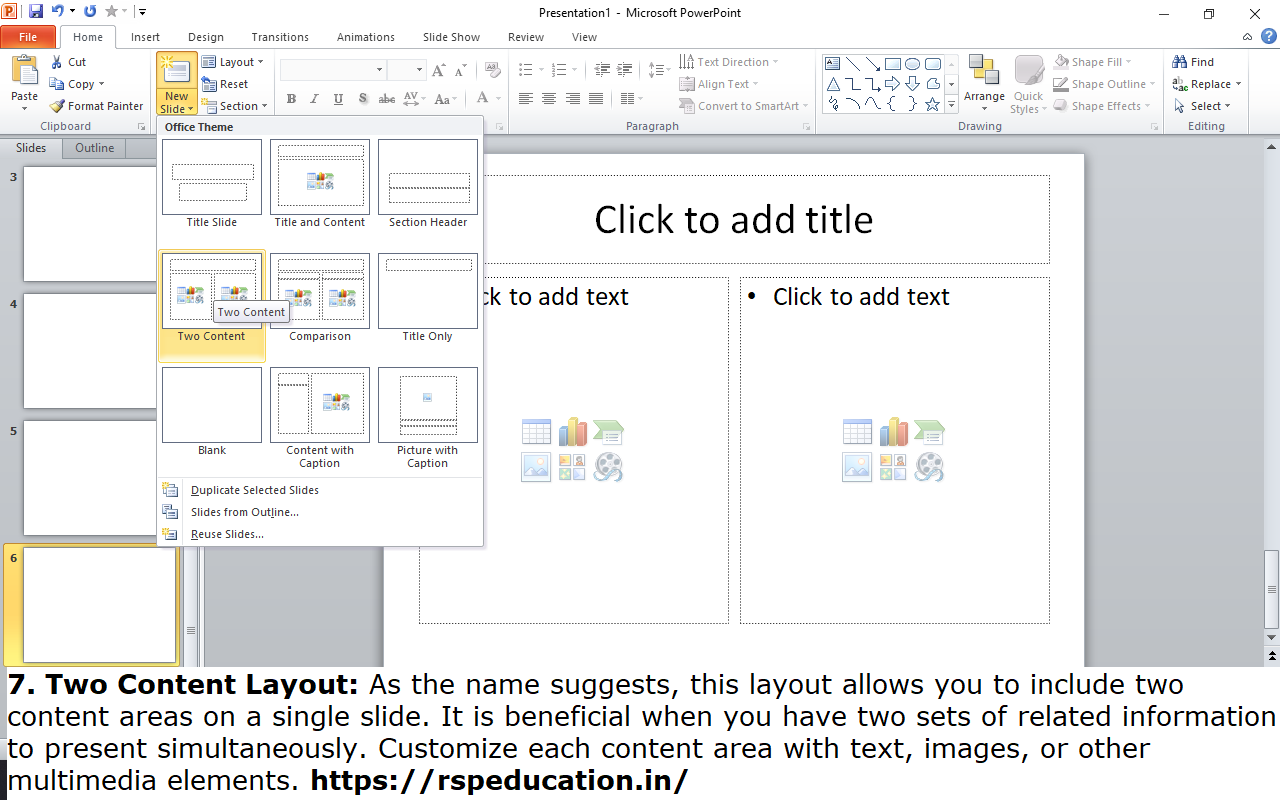
8. Blank Layout:
The blank layout provides a clean slate with no predefined placeholders. It gives you complete freedom to design the slide as you see fit. Use the blank layout when you need full creative control over the slide's content and arrangement.
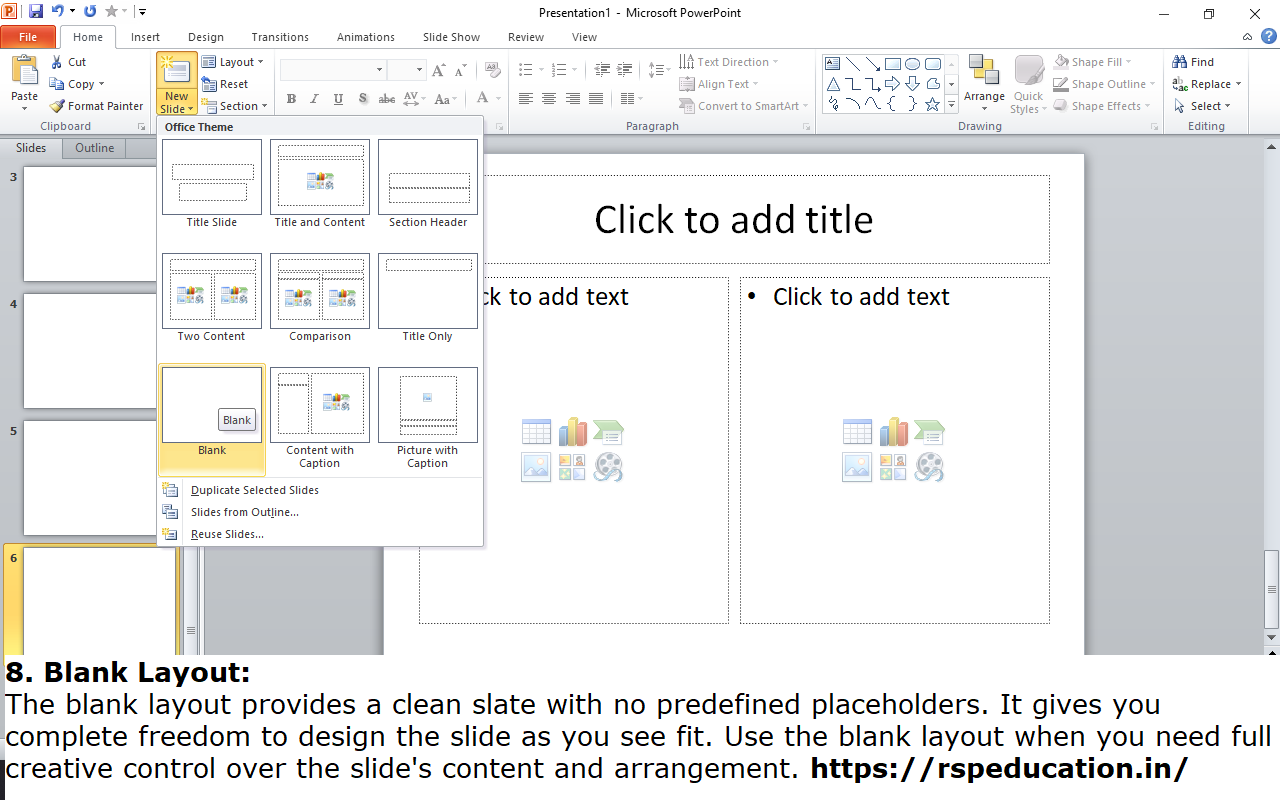
9. Content with Caption Layout:
This layout includes a content area along with a designated space for a caption or description. It is useful when you want to provide additional context or explanation for the content on the slide. Use this layout to enhance the audience's understanding.
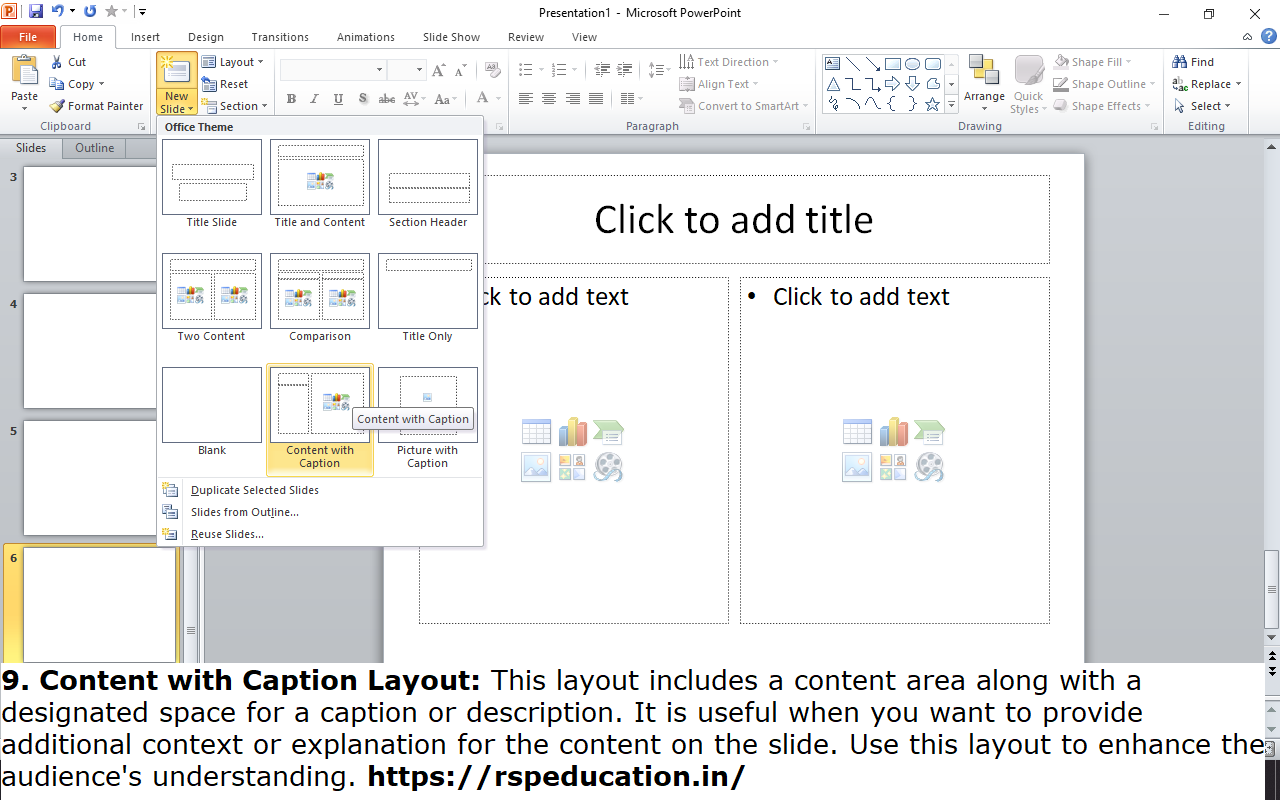
10. Picture with Caption Layout:
This layout includes a Picture area along with a designated space for a caption or description. It is useful when you want to provide additional context or explanation for the Picture on the slide. Use this layout to enhance the audience's understanding.
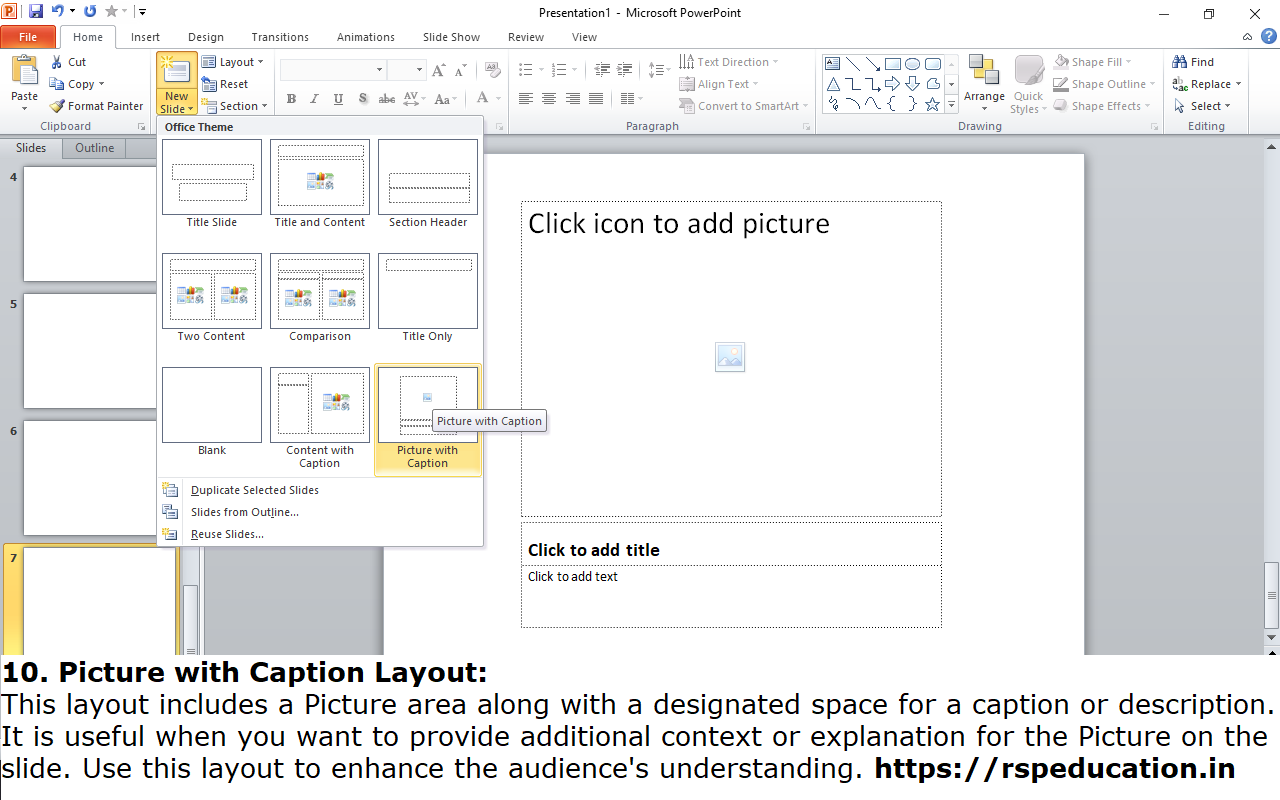
Understanding these slide layouts empowers you to create presentations that are well-organized, visually appealing, and effectively convey your message. Choose the layout that best suits your content and enhances the overall impact of your presentation.
Leave a comment